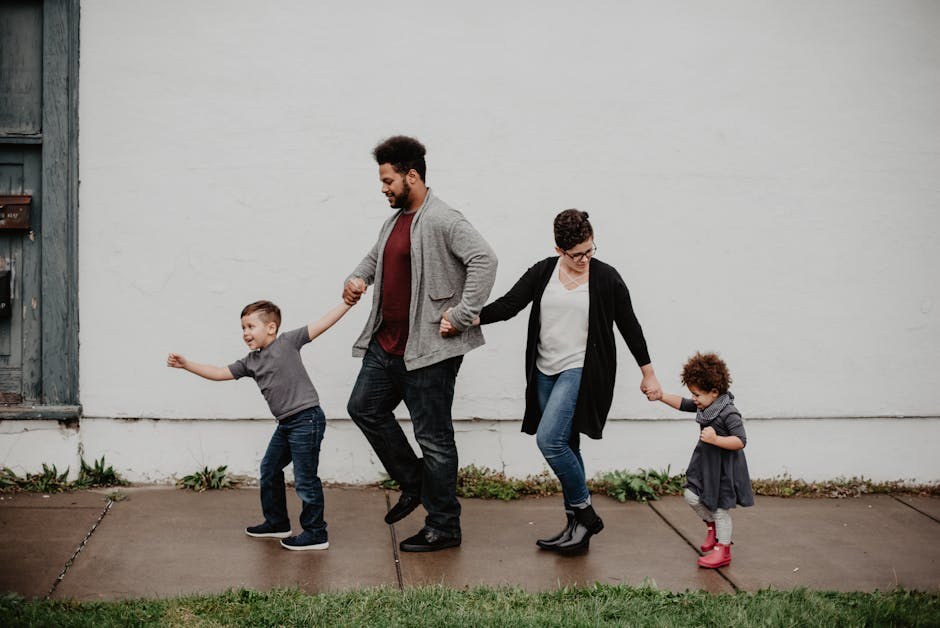You sensed it before you could explain it – a subtle cooling, a new hesitation, a different rhythm to conversations that once flowed without effort. If you’re wondering whether a partner is pushing you away, you’re not alone. Relationships don’t usually unravel in a dramatic instant; they drift when one person creates distance, sometimes on purpose and sometimes without realizing it. This guide reframes that uneasy feeling into something you can observe, understand, and respond to with self-respect and clarity.
Noticing the shift: everyday signs of emotional distance
Before you act, you need a clearer picture of what’s changed. One isolated moment might mean nothing – a busy week, a restless mood – but a pattern can point to someone pushing you away. Look for consistent changes in how they connect, communicate, and prioritize the relationship.
Warmth fades in daily contact. This isn’t only about sex; it’s about micro-moments of closeness. Hugs are shorter, kisses are rarer, and casual touches vanish. When affection drops off and stays low, it can be a sign they’re pushing you away.

Listening turns shallow. They used to lean in and ask follow-up questions. Now replies are minimal, and you feel like an interruption. If your stories land with a thud, you may be witnessing someone pushing you away through disengagement.
Availability evaporates. Calls go unanswered, texts take hours, plans are “complicated.” Life can be hectic, but habitually dodging time together often signals pushing you away in slow motion.
You’re guessing instead of knowing. Where they once shared feelings openly, now you’re decoding silence and mood swings. No relationship should require mind reading; this ambiguity can be an indirect way of pushing you away.

Your gut registers a difference. You can’t measure it, yet the vibe is off. Intuition notices patterns before logic catches up – a common early marker of someone pushing you away.
Conversation goes surface-level. Logistics replace intimacy. You talk about errands, weather, or TV, while deeper sharing disappears. The emotional oxygen is thinning – another form of pushing you away.
Solo time swallows shared time. Everyone needs space, but when “me time” always displaces “us time,” distance becomes a default. That steady retreat can be deliberate pushing you away.

Little spats multiply. You’re bickering about nothing – tone, timing, toothpaste – because tension is leaking out sideways. Frequent friction can be a shortcut for pushing you away without saying the hard thing.
Phones become walls. You used to enjoy unplugged moments, but now screens are permanent chaperones. Constant scrolling during time together often signals someone is pushing you away by choosing distraction over presence.
They float the idea of “a break.” Sometimes that’s a temporary pressure valve; often it’s a soft launch for an ending. The request itself can be a direct form of pushing you away.
Distance replaces initiative. Morning texts stop, midweek hangouts vanish, and effort shrinks. Pullback like this is classic pushing you away, especially when it arrives abruptly.
Their mind is elsewhere. They’re physically present but mentally far – zoning out during conversations, missing details, seeming preoccupied. This attention drift often accompanies pushing you away.
Blame gets misdirected. Suddenly you’re “always” doing something wrong. When someone lacks the courage to confront the real issue, they may push by picking fights – an indirect method of pushing you away.
Why someone might create distance
Understanding motive doesn’t mean excusing behavior; it helps you choose a healthy response. People rarely announce, “I’m pushing you away.” They act from fear, hurt, or habit. These underlying dynamics are common in relationships that feel off-kilter.
Unspoken hurt. Perhaps something you said or did stung – even unintentionally. Instead of naming it, they withdraw to protect themselves or to “even the score.” That retreat can look like pushing you away while they nurse the wound.
Fear of intimacy. Getting close raises the stakes. If closeness once ended in pain, avoidance can feel safer. Arguments and distance sometimes become reflexes – a familiar pattern of pushing you away before they risk being left.
Attachment patterns. An avoidant style often resists dependence and emotional reliance. When things grow serious, the instinct is to retreat – a learned template that repeats as pushing you away even when they care.
Low self-esteem. If someone feels unworthy, love can feel like a test they’re doomed to fail. “I’ll mess this up” or “You’ll leave anyway” becomes a script, and distancing – that is, pushing you away – feels like self-protection.
Trust injuries. Past betrayal can echo loudly. Whether the breach came from you or a previous partner, suspicion can harden into habit. Keeping you at arm’s length – subtly pushing you away – may be their way of staying “safe.”
Preparing yourself before you respond
When it looks like someone is pushing you away, impulsive reactions are tempting – chasing for reassurance, overexplaining, or escalating to force clarity. Pause first. Decide how you want to show up. Grounding yourself changes the conversation that follows.
Steady your emotions. Reactivity often feeds more distance. Give yourself time to breathe, journal, or talk to a trusted friend so your next move reflects your values – not the panic that comes when someone is pushing you away.
Name what you’re observing. Specific patterns (“We used to talk each night; lately we go days without a check-in”) are easier to discuss than conclusions (“You don’t care”). Clarity interrupts the fog that accompanies pushing you away.
Reconnect with your boundaries. What do you need to feel respected and secure? Boundaries aren’t threats – they’re guardrails that protect connection, even when a partner is pushing you away.
How to talk about the distance
Honest conversation won’t guarantee the outcome you want, but it gives the relationship its best chance. The aim is not to corner them – it’s to invite candor while respecting both people’s limits.
Lead with calm, not accusation. Try framing: “I’ve been feeling less connected. I miss our closeness and want to check in.” This opens the door without blame, which matters when someone may already be pushing you away.
Ask, don’t assume. “Is something weighing on you?” and “Did I do anything that hurt you?” invite specifics. Curiosity lowers defenses and can slow the momentum of pushing you away.
Seek clarity about needs. If they want space, what does that actually mean – fewer texts, different plans, a defined time frame? Vague requests can morph into open-ended pushing you away; specifics protect both people.
Share your non-negotiables. “I’m okay with fewer weeknight hangouts for a while, but I need us to talk twice a week.” Speaking plainly helps you see whether their version of space is just temporary adjustment or ongoing pushing you away.
Consider support. If the two of you are stuck, a neutral third party can help you map patterns. It’s not about fixing someone – it’s about interrupting cycles like chronic pushing you away that neither of you wants.
Making choices if the pattern continues
Sometimes the distance eases once it’s named. Other times, it persists – and that’s telling. You’re allowed to choose what protects your wellbeing, even if the other person keeps pushing you away.
Match words with actions. If they say they want the relationship but continue deprioritizing it, believe the pattern. Repeated behavior is a clearer message than promises – especially when it resembles ongoing pushing you away.
Rebalance your effort. Stop overfunctioning. When you carry both sides – initiating every plan, smoothing every conflict – you cushion the impact of their pushing you away and exhaust yourself.
Define a timeline. Give changes a reasonable window, then reassess. Open-ended waiting tends to normalize pushing you away and leaves you in limbo.
Be willing to end it kindly. If there’s no movement, choosing closure protects your dignity. Ending well is hard – and humane – when the alternative is indefinite pushing you away.
Rebuild your center. Nourish friendships, routines, and goals that remind you who you are. Self-care isn’t a consolation prize; it’s how you stay whole when someone is pushing you away.
Deepening the lens: how these signs intertwine
These signals rarely show up alone. Emotional retreat often unfolds as a cluster – less affection, fewer check-ins, more conflict, and a steady tilt toward solo time. That cluster matters. When distance appears in one place, partners who want closeness usually compensate elsewhere. By contrast, when someone is pushing you away, they reduce connection across channels all at once. Seeing the pattern as a system helps you respond strategically instead of chasing isolated moments.
It’s also useful to distinguish hesitation from disinterest. Hesitation feels uneven – the person might pull back, then make a meaningful effort, then wobble again. Disinterest feels consistent – low initiative, thin responses, minimal joy in shared time. If your conversations never progress beyond logistics and your bids for closeness keep bouncing off, the overall arc may be pushing you away, not a temporary wobble.
Practical scripts and boundary language
When emotion runs high, words get tangled. Having language ready can keep the conversation constructive – even if the other person is pushing you away.
Describing your experience: “Lately I’ve felt a gap between us – fewer check-ins, less time together. I value what we have and want to understand what’s changed.”
Asking for clarity: “Would you be open to telling me if this is stress or if you’re needing distance from the relationship itself?”
Setting a boundary: “I’m okay giving some space this month, and I need a weekly call to feel connected. If that doesn’t work, we should revisit where this is heading.”
Owning impact without self-erasure: “If I hurt you, I want to repair it. I’m willing to listen and change specific behaviors. I’m not okay with ongoing silence that keeps pushing you away without explanation.”
Self-check: are you overcorrecting?
When faced with distance, many people overcompensate – grand gestures, constant texts, hyper-attunement to every sigh. Unfortunately, overcorrection can intensify the cycle by confirming the other person’s fear of engulfment, especially if their pattern is pushing you away to manage anxiety. A steadier approach is paradoxical: reduce pursuit, increase clarity, and invest heavily in your own life. That balance invites the other person to meet you where you are rather than rewarding retreat.
If the distance began after a specific incident
Sometimes the timeline is clear. A tense conversation, a forgotten promise, a sharp comment – and then withdrawal. In that case, skip the detective work and address the moment directly. “I noticed our tone changed after that night. I regret how I spoke. Can we talk about what felt hurtful?” If the response is to keep pushing you away rather than engaging, you’ve learned something important about readiness and repair.
If the distance tracks stress outside the relationship
Work crunches, exams, family issues – external stress can compress bandwidth. People under pressure sometimes protect limited energy by trimming social commitments. That can look like pushing you away, even if the motive isn’t about you. Still, stress isn’t a hall pass for neglect. Reasonable accommodations – fewer plans, clearer check-ins – are workable. Chronic neglect is not.
Reading your own story in the pattern
It’s easy to fixate on their motives and miss your own. Do you rush to pursue when you sense distance? Do you freeze and wait for the storm to pass? Your default response can either soften the pattern or amplify it. Naming that reflex – and adjusting it – helps you stay steady even if they continue pushing you away.
Choosing a grounded next step
Whether this turns into renewed closeness or a respectful goodbye, your next step can honor your needs. Observe the pattern, invite honesty, set boundaries, and match your effort to theirs. If they meet you halfway, you’ll feel momentum. If they keep pushing you away, you’ll have the clarity to move forward without second-guessing yourself.
Whatever you decide, remember that love thrives where both people show up – consistently, kindly, and with accountability. You deserve a connection that reaches back when you reach out, not one that keeps pushing you away when you’re offering your hand.